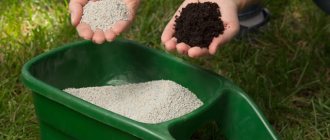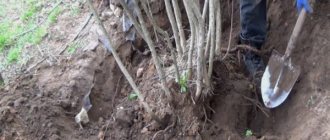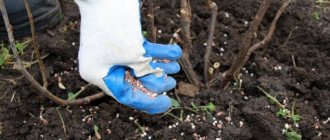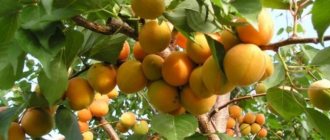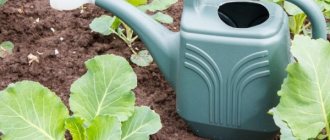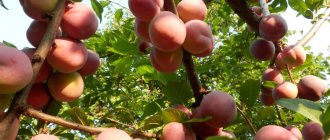In early spring, as soon as the snow melts, you need to immediately begin preparing currants for the summer season. First of all, you need to start with a thorough inspection of the bushes and find out how the currants overwintered, whether there are signs of diseases and pests on the bushes. Based on the results of the inspection, we determine the scope of work and what care is needed for the currants. If we are late in carrying out this work, we may not get a large harvest of berries on the bush. So, we determine what needs to be done and get to work.
Sanitary pruning of bushes
Branches are pruned in early spring before sap flow begins. First, carefully inspect the bush and remove diseased, weak, frozen, pest-infested shoots with pruning shears. Be sure to burn the cut branches.
By pruning, we simultaneously form a bush. If you did not prune in the fall, then in the spring before the first leaves appear, this must be done. On young bushes, 2-3 well-developed zero shoots are left, and the same number of old branches are removed.
Remove branches located at an angle of 45º to the soil; this will enhance the growth of annual shoots, which will produce a harvest next year, and will make the bush erect. When examining currants, pay attention to the swollen round buds on the branches that resemble peas. It is there that pests overwinter and, with the onset of warm weather, begin to actively reproduce. We'll talk about pest control a little later.
How to care for currants in spring
Caring for currants in spring includes:
- disease prevention,
- pest protection,
- pruning
First pest control treatment of the season
Currants often suffer from insect pests: currant bud mite, glass beetle, aphids and others. Fungal and viral diseases, for example, anthracnose of leaves, also create problems. Therefore, without treatments, the gardener has little chance of a good harvest.
Without spring treatment, currants will be susceptible to various diseases, for example, anthracnose.
The first treatment is carried out in late winter or early spring in several ways:
- The bushes are doused with boiling water from a watering can. Short-term exposure to hot water does not harm the bark and dormant buds, but is guaranteed to kill mites hibernating in them, as well as spores of harmful fungi. The processing time is long and varies by region. For example, in Belarus this can be done in the middle of winter, if there are no snowdrifts covering the bushes, but in the Urals it is better in the spring - until the plant begins to wake up and until the first signs of sap flow and swelling of the buds appear. This time is well determined by the appearance of a light green haze on the bush. It is believed that shock shaking with boiling water also strengthens the plant’s immunity;
- sometimes gardeners, to enhance the effect, add potassium permanganate to boiling water until it turns slightly pink, a tablespoon of salt or 50 g of iron or copper sulfate per 10 liters of water;
- if for some reason it was not possible to carry out the treatment in early spring, it is carried out at the end of March or beginning of April, always until the buds are completely swollen, with the following solution: for 10 liters of warm water, 500–700 g of carbamide (urea) and 50 g of copper or iron vitriol. This is a very powerful concentration of urea, but very little gets under the bush and in the future it will work as a nitrogen fertilizer;
- The following recipe for getting rid of ticks is also used - a solution of colloidal sulfur, 10 g per 10 liters of water.
Video: watering currants with boiling water
Spring pruning
Pruning is carried out in early spring, before the buds completely swell. In the southern regions, for example, in Belarus, bushes can be pruned during the entire dormant period, because there is no risk of freezing at the cutting site.
Treatment with boiling water melts the snow on the currant bush - you can start pruning
Pruning bushes of different ages is different, but there is one common condition. Currants produce the best berries from last year's growth. They cannot be pruned, otherwise this year’s harvest will literally be cut off. Currants bear fruit both on three-year-old branches and on older ones, but most of the large berries are on two-year-old branches that began growing last year. It is very easy to distinguish them by appearance - the bark is much lighter than that of older branches.
Spring pruning of currants is carried out every year:
- In the first year, the newly planted bush is pruned completely, so that stumps about 5 cm high remain above the soil level. It does not matter when the bush is planted (currants are planted both in the fall, around mid-October, and in the spring, before the sap begins to flow). But autumn seedlings manage to take root and begin to grow faster in the spring. Spring seedlings will lag behind at first, but eventually level off.
- In the second year after radical pruning during planting, there is rapid growth of strong young shoots that will bear fruit well next year. There is disagreement among gardeners regarding pruning in the second year. Some people think that there is no need to cut anything this year. Others argue that at this age the bush’s skeletal branches should already be shortened by half in order to stimulate the growth of young fruit-bearing shoots.
In the second year after planting, cut off the main branches by half.
- In the third year, in early spring, the usual sanitary, formative and thinning pruning is carried out. Branches that grow too low, lie on the ground, as well as weak, broken and diseased branches are removed.
- On four-year-old and older bushes, serious pruning is carried out in early spring: From a quarter to a third of the old bush is pruned. The same unnecessary branches are removed as in the third year.
- On fruit-bearing adult branches that have divided into two shoots, one, weaker one is removed.
- The root shoots are cut out.
- Part of the branches inside the bush is completely removed, under the stump, primarily crooked, branchy ones, which greatly thicken the bush.
- The number of main branches is not limited; there can be several of them, approximately equal in size. In summer, a bush with foliage should be sufficiently well lit and ventilated, but there is no need to completely expose it.
Such annual pruning rejuvenates old bushes and prolongs the active fruiting of currants.
Video: spring pruning of currants
Recent Entries
Lilac perennials that are beautiful, compact and do not crowd out other plants Why when buying seedlings you should not take the sellers’ word for it and how to determine the age of the plant using 3 signs Tomato seedlings have turned purple or whitish: why the color has changed and how to save the plants
Frost protection
Currant flowers are very sensitive to frost. Therefore, in the northern latitudes of central Russia (in particular, in the Urals), it is not recommended to plant varieties that bloom too early. But even late-flowering varieties can suffer from returning cold weather, and sudden frosts also occur in warmer regions, including Belarus. In this case, you need to have a light non-woven covering material that can be used to cover the flowering bush during frosts without damaging the flowers and young leaves. This material is guaranteed to protect against frost down to –2°C.
Delicate red currant flowers are afraid of frost, so in case of frost they need to be covered with non-woven material
Mulching and loosening
The currant root system is located very close to the surface, so loosening and weeding is carried out very carefully, to a depth of no more than 1–3 cm. In the spring, this is quite enough to destroy all the weeds, because at this time they are still poorly developed and have not had time to take deep roots .
After loosening and weeding, the soil needs to be covered with mulch - it will prevent the soil from drying out and suppress the growth of weeds. But you can’t do this too early. We need to wait until it gets warm for most of the weed seeds to germinate and for the soil to warm up for normal currant growth. Under mulch, the soil will remain icy for a very long time after winter. Therefore, weeding, loosening and mulching are carried out in late spring, when the earth has warmed up well to a depth and most of the weeds have sprouted.
Mulching currants in the spring can only be done when the earth has warmed up well in the depths
In cold regions (in particular, in the Urals), the surface roots of currants can freeze out. They winter well under a thick layer of snow that falls before severe frosts. Since such weather conditions do not always occur, many gardeners cover the ground under the bush with mulch in the fall. If the bush overwintered under mulch, remove it as early as possible in the spring to allow the soil to warm up faster, and then add new mulch to protect it from weeds.
Fertilizer application
Currants are demanding of organic matter, so it is better to use rotted manure, humus or compost as fertilizer.
Currants respond well to organic fertilizers
In addition to feeding during planting, every spring currants are fed with nitrogen fertilizers:
- carbamide (urea),
- ammonium nitrate,
- ammonium sulfate (ammonium sulfate).
Fertilizers are scattered over the surface before weeding and loosening at the rate of 15 g per 1 square meter. m.
You need to know that ammonium sulfate, by its properties, is an acidic fertilizer; it can significantly acidify the soil, if not at once, then over the years, and currants need slightly acidic soil with a pH of about 6.5. Therefore, it is advisable to add ammonium sulfate with fluffed lime, dolomite flour or wood ash, which quench the acid.
Feeding bushes
The first feeding is carried out in early spring. Under every bush
- pour humus,
- water with urea solution (30 g per 10 liters of water), pour 1 bucket of ready-made fertilizer under each bush,
- fed with liquid organic fertilizers.
The 2nd feeding is carried out when the berries begin to set. At this stage, phosphorus-potassium fertilizers (mineral or organic) are applied. Instead of mineral components, you can use organic fertilizers prepared by yourself. It is best to add wood ash to a 0.5-liter jar under each plant.
By the way, you need to add ash not to the center of the bush, but along the perimeter of the crown and even further 20-25 cm. It is at this distance that the mass of sucking black currant roots are located.
Features of spring care
Probably the first question that a novice gardener and gardener will have is why do bushes need quality care? After the winter cold, the plant is weakened, it needs to recover in order to begin sap flow, bud opening, and flowering with renewed vigor.
You need to start caring for black, white and red currant plantings in the garden when the temperature remains at least 5 degrees Celsius. You should not postpone care activities, otherwise it may be too late (the buds will swell) and garden activities will not be as effective, and some can no longer be carried out.
By the way! Spring care for the red, white and black varieties is not fundamentally different. Therefore, you can use the tips described below, regardless of what kind of shrub you have.
Why do you need covering material?
At the end of the spring processing, dark material is laid out under the bushes - cardboard, roofing felt, black film or spunbond. In this way, we will create darkness for pests that have overwintered in the soil, which means we will extend their hibernation period. As a result, they will not be able to crawl out of the ground for some period. And when they wake up and crawl out, the breeding period will be missed.
Having laid out black non-woven material under the currants, it is left under the bites for the whole summer. It is breathable, moisture is retained underneath it, and you can water the plant according to the material. In addition, no additional treatment is required, that is, under such shelter the soil always remains moist. As you probably understand, the covering material acts as mulch.
In addition, such mulch helps to quickly warm the soil and quickly awaken the roots.
Reproduction of black currant in spring
The most effective method of propagating a bush is by layering. Branches buried in the ground quickly develop a root system and take root well when transplanted. Use a one-year or two-year-old twig from a 3-5 year old bush for propagation. Let's take a closer look at the process itself - the main steps:
- Find a healthy shoot on the bush, located close to the ground.
- In the tree trunk circle, dig up 5-10 cm of soil, dig a shallow groove and place the shoot there. Sprinkle with earth. The top of the branch should be protruding from the soil.
- They are secured in several places with slingshots or large staples. Carry out abundant watering and mulching.
- The soil should not be allowed to dry out. Watering activities are carried out regularly.
- The next year, the seedlings are cut off from the main bush and transplanted together with a lump of earth to a permanent place.
The best way to treat currants against pests and diseases
Of course, the bushes can be watered with very hot water - the most common folk method for processing currants. A fairly simple, effective way to combat diseases and pests. But it will be effective if the plant is watered even before the buds swell and bloom.
Gardening stores now have a huge list of products for sale to combat pests and plant diseases. All products are divided into chemical (chemicals) and biological (biological products).
- Fungicides - means for the prevention and control of pathogens: 3% Bordeaux mixture, copper sulfate, Tiovit Jet, Fundazol, Topaz, Colloidal sulfur, etc.;
- Insecticides – means to combat harmful insects: Aktara, Iskra “Double Effect”, Inta-vir, Tanrek, etc.;
- Biological fungicides against fungal diseases: Fitosporin, Pentafag, Mikosan, Pharma Iodine, etc.;
- Biological products with insecticidal action against pests: Aktofit, Bitoxibacillin, Fitoverm, Lepidotsid, Aversectin S, etc.;
- Combined preparations (tank mixtures), including the functions of fungicides and insecticides.
In conclusion, I advise you to watch a video that tells you when and how to treat currant diseases and pests.
The list of funds is quite extensive and is constantly updated. When purchasing currant treatment products, carefully read the instructions for use on the back of the packages.
Have a good harvest!
Watering and mulching
Black currant is a drought-resistant crop, but it will accept infrequent watering with pleasure. Keeping the soil moist will ensure a good harvest in the future.
Water the shrub during flowering in special grooves formed in the area of the trunk circle. Moisten the soil with warm water in the morning or evening, no more than once a week. Pour out such an amount of water so that the top layer of soil is saturated to 30 cm. Usually the following scheme is followed: 4 buckets of water for 1 bush.
Irrigation cannot be carried out using the sprinkling method. Such an event can lead to an outbreak of fungal diseases.
After watering, it is recommended to mulch the currants with cones, old sawdust, straw, compost, peat or non-woven black material. A layer of mulch prevents the development of weeds and prevents moisture from evaporating from the soil.
Spring treatment against diseases
After the snow melts, before the buds open, the bushes are treated and treated preventively against diseases. Spray the plants at above-zero temperatures, in 2-3 doses at intervals of 14 days.
Solutions:
- 3% copper sulfate;
- 5% iron sulfate;
- 3% Bordeaux mixture;
- Gamair, Fitosporin-M, Topaz, Fundazol and other products.
Some people use a 3-day ash infusion (dissolve 2 handfuls of ash in 1 liter of water and dilute 3 liters with water). An infusion of rotted hay helps against powdery mildew - a third of the bucket, the rest, up to the top, is water. Take 1 part infusion to 3 parts clean water.
How to properly fertilize currants, what types of fertilizers there are, their specifics
- Currants planted last year do not need to be fertilized if organic and mineral fertilizers were added to the planting hole when planting.
- They begin to fertilize after 2-3 years.
- First, water the plants with water, and then apply fertilizers so as not to burn the roots and improve absorption.
Important! Watering is carried out a day or 1-2 hours before the procedure.
- If root fertilizer gets on the leaves and fruits, they must be washed with clean water.
- Fertilizing is applied in the early morning or evening so that the sun's rays do not burn the plants.

